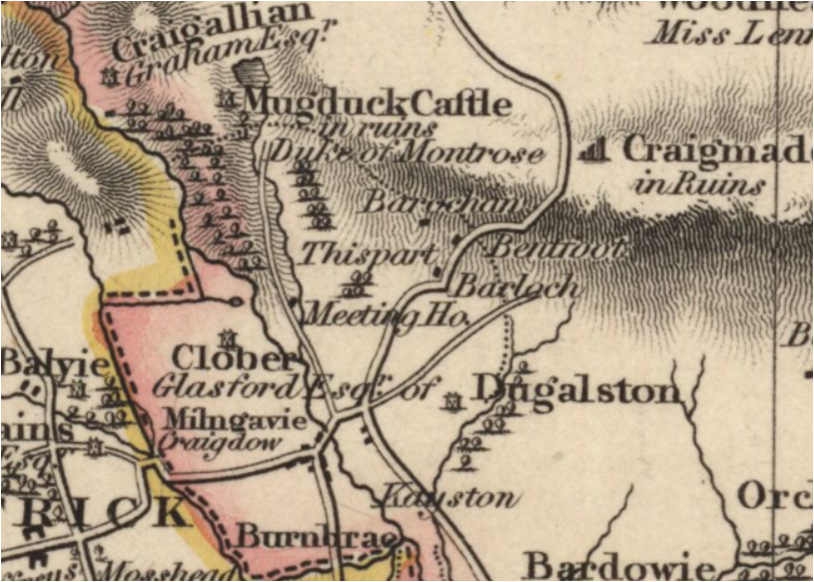|
Heatherbank Museum Of Social Work
The Heatherbank Museum of Social Work is part of the Glasgow Caledonian University in Scotland, and is believed to be the only museum dedicated to social work. The museum was founded in the early Victorian house of Heatherbank, Milngavie in 1975 by Colin and Rosemary Harvey. Heatherbank Press Publisher also operated out of the museum while at Heatherbank. After their deaths in 1993 the museum was moved to the Glasgow Caledonian University. In 2004 there ceased to be a physical museum at the university, however the works were subsumed into the Glasgow Caledonian University and is part of the university's research collection. The material in the collection contains documents relating to poorhouses; administration of poor law; former hospital A hospital is a health care institution providing patient treatment with specialized health science and auxiliary healthcare staff and medical equipment. The best-known type of hospital is the general hospital, which typically has an ... [...More Info...] [...Related Items...] OR: [Wikipedia] [Google] [Baidu] |
Glasgow Caledonian University
Glasgow Caledonian University ( gd, Oilthigh Chailleannach Ghlaschu, ), informally GCU, Caledonian or Caley, is a public university in Glasgow, Scotland. It was formed in 1993 by the merger of The Queen's College, Glasgow (founded in 1875) and Glasgow Polytechnic (founded in 1991). In June 2017, the university's New York partner institution, which was founded in 2013, was granted permission to award degrees in the state, the first higher education institution founded by a foreign university to achieve this status. History The university traces its origin from ''The Queen's College, Glasgow'' (founded 1875), and the ''Glasgow College of Technology'' (founded 1971). The Queen's College, which specialised in providing training in domestic science, received the royal accolade of being named after Queen Elizabeth in its centenary celebrations in 1975. Queen Elizabeth was, herself, patron of the college since 1944. Glasgow Polytechnic, which was one of the largest central institut ... [...More Info...] [...Related Items...] OR: [Wikipedia] [Google] [Baidu] |
Museum
A museum ( ; plural museums or, rarely, musea) is a building or institution that cares for and displays a collection of artifacts and other objects of artistic, cultural, historical, or scientific importance. Many public museums make these items available for public viewing through exhibits that may be permanent or temporary. The largest museums are located in major cities throughout the world, while thousands of local museums exist in smaller cities, towns, and rural areas. Museums have varying aims, ranging from the conservation and documentation of their collection, serving researchers and specialists, to catering to the general public. The goal of serving researchers is not only scientific, but intended to serve the general public. There are many types of museums, including art museums, natural history museums, science museums, war museums, and children's museums. According to the International Council of Museums (ICOM), there are more than 55,000 museums in 202 countrie ... [...More Info...] [...Related Items...] OR: [Wikipedia] [Google] [Baidu] |
Social Work
Social work is an academic discipline and practice-based profession concerned with meeting the basic needs of individuals, families, groups, communities, and society as a whole to enhance their individual and collective well-being. Social work practice draws from areas, such as psychology, sociology, health, political science, community development, law, and economics to engage with systems and policies, conduct assessments, develop interventions, and enhance social functioning and responsibility. The ultimate goal of social work is the improvement of people's lives and the achievement of social justice. Social work practice is often divided into three levels. Micro-work involves working directly with individuals and families, such as providing individual counseling/therapy or assisting a family in accessing services. Mezzo-work involves working with groups and communities, such as conducting group therapy or providing services for community agencies. Macro-work involves fo ... [...More Info...] [...Related Items...] OR: [Wikipedia] [Google] [Baidu] |
Heatherbank House
Heatherbank House is an early 19th century private house located in Milngavie, Scotland and is one of the oldest buildings in the town. It is the former site of the Heatherbank Museum of Social Work. History Early history It is unclear when Heatherbank House was constructed. John Thomson (cartographer), John Thomson's Atlas of Scotland (published 1832) clearly shows a building marked as a "Meeting House" in the location of the modern day house. Deeds show that the property/land was sold by James Burns (Scottish shipowner) to John Blackwood (bleacher) on 5 May 1838. Links to the Milngavie Waterworks In 1852 the engineer John Frederick Bateman was consulted by Glasgow Council in regard to its water supply. In 1854, on Bateman's advice, a bill was obtained to supply water to Glasgow from Loch Katrine. Alfred Moore (engineer) was appointed as his resident engineer and he purchased Heatherbank on 18 November 1856. Work had commenced on Milngavie water treatment works, Mug ... [...More Info...] [...Related Items...] OR: [Wikipedia] [Google] [Baidu] |


